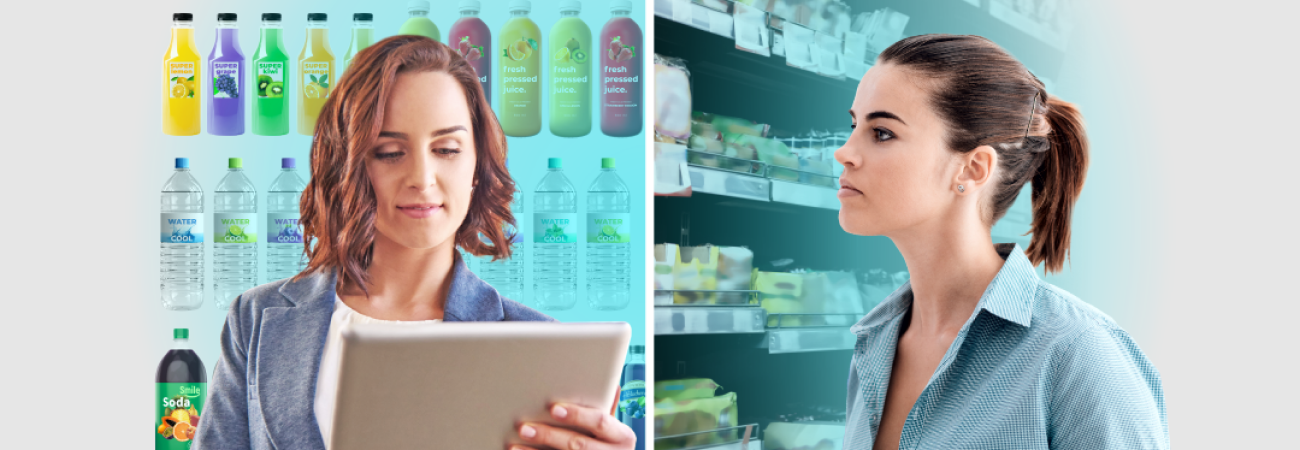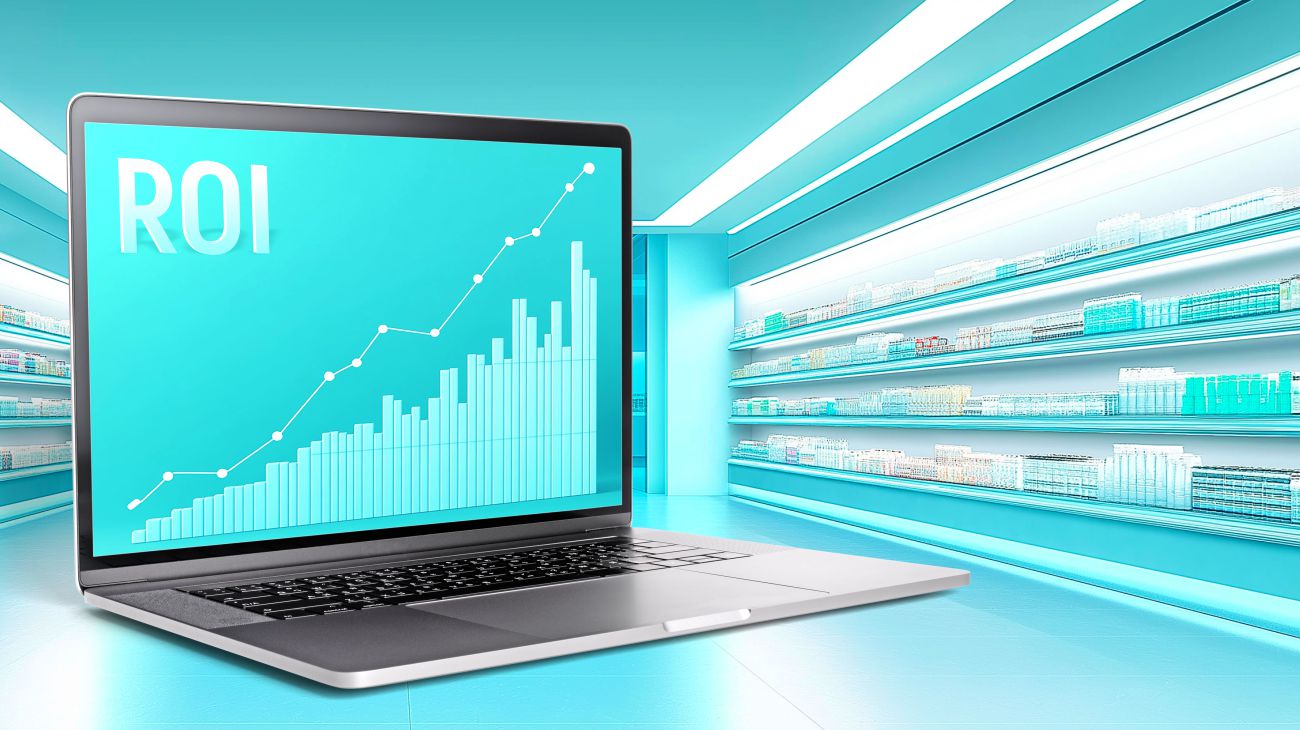Current-day buyer has long been spoiled by the wide range of products, the number of various stores, offers to buy goods at a discount, receive bonuses, cashback or gifts for purchases. Beneficial prices or new items on the shelves are already taken for granted. However, representatives of brands and retailers have learned to manage the very desire to buy. The main tool is the merchandising rules based on the effective display of goods.
Table of Сontents
What is Effective Product Display? Display Rules
Display refers to various methods of placing products on the shelves of the trading floor. The overriding priority of successful sales in the store is assigned to the effective display of goods. Brand recognition, popularity, demand and sales volume depend on the layout on the shelf. The main objective is to put a newly-released/popular product within eyesight of potential buyers.
Proper display of goods gives the product a more attractive appearance. The attention of buyers is riveted to specific items, as if the goods themselves say that they should be in the shopping basket.

It is uncomfortable for the modern buyer to spend precious time comparing prices and examining the characteristics of the same-type goods. Convenience is put in the foreground, which is ensured by appropriate display of goods. But to make it effective for specific products is the very task of the merchandiser.
We can define several general merchandising rules:
-
- “Facing the buyer.” The goods are placed on the shelves so that it is visually convenient for the buyer to make his or her choice — with a label or front side facing the person. The consumer loves harmony and respectfulness, so there should be good order on any trading shelf.
- At least three different products on the shelf. This applies to every article. One pack of juice on the shelf tells the consumer that something is wrong with it, but three already hint at the demand for the product. Three is considered a balanced number; therefore, when laying out goods, they place an amount that is a multiple of three.
- Physiology is also taken into account when laying out goods. On average, the visibility range of an ordinary person is 50 cm. If it is required to draw the consumer’s attention to the product, the product should occupy at least 50 cm on the shelf.
- A new brand or product is best placed next to the most popular product in the same category. A person’s subconscious desire for generalization is triggered: the properties of a well-known product are automatically transferred to a new brand.
- Change of “scene”. The consumer is tired of monotony, so the layout needs to be changed from time to time. Just do it correctly so as not to cause discomfort to customers.
It is easier to manage this work using special software. Due to automation of merchandising, all the main actions are switched to automatic mode: planograms, layouts, analytics, product range monitoring, etc.
Why is Product Display Essential to a Manufacturer?
The retail space is a special world into which the buyer enters. Many attention-grabbing goods, promotions, and advertisements appear on the way to the desired loaf of bread.
For sure, the main objective of an effective display of goods is to make it easier for the buyers to find what they need. But other objectives can also be achieved:
- highlight the products of a particular manufacturer on the shelf;
- increase sales of unpopular goods;
- draw the buyer’s attention to short-lived goods to reduce the volume of returns;
- increase the average spend of the buyer.
It is important for each manufacturer to increase visibility of its products on the trading shelf. Not only sales volume depends on this factor, but also brand awareness.
What is a Planogram and Why is It Important to Follow It?
In short, a planogram is well-defined arrangement of goods on retail equipment. The planogram of the store shows where, in what quantity and on what rack a particular product will be displayed. If we look at this concept in the format of one rack, then the planogram of the product display reflects the company’s sales and development strategy, highlighting one or another product. Each product has its own place and planned stock.
Previously, drawing up a planogram, its analysis and monitoring took a lot of time, because the whole process was done manually.
For example, planograms were often created in Microsoft Excel or Power Point. Today, companies increasingly use dedicated IT solutions that allow managers to create a planogram with dozens of SKUs in a few minutes. In particular, Goods Checker can create a planogram with 100 SKUs of different sizes with photos in a matter of minutes. This planogram will be clearly arranged, and the merchandiser will not make a mistake at the point of sale when checking the display.
In addition, the solution provides a functionality to automatically add SKUs to an empty space on the planogram according to specified rules, compare the current planogram with the previous version and view the revision history, or handle several SKUs simultaneously, etc.
It is essential to follow the planogram and observe the principles of product display, because this is one of the main reasons for increasing the competitiveness of the store/brand/product. About 80% of buying decisions are made on the trading floor, on a whim, with just a glance at the trading shelf. That is why the planogram can be called a buying incentive tool.
How to Monitor the Layout? Role of Merchandisers
Before the advent of automated software to process planograms, the display of goods was checked and monitored manually. The merchandiser took photos of finished merchandise shelves and sent them to the manager or supervisor. Those, in turn, analyzed several thousand images every month, missing important flaws due to the human error.
Advanced software allows managers to not only monitor the layout and KPIs of merchandisers in general. It’s not even about a detailed analysis of the selected data. Apps provide comprehensive merchandising optimization. Photo recognition starts with subsequent analysis. Software identifies discrepancies in the planogram, for example, it shows which products are missing on the shelves.
The main role of the merchandiser comes down to timely laying of goods, arrangement of retail shelves, analysis of stock balances and submission of a report (often in photo format) on the work done.
It is now possible to monitor the layout remotely. There are three ways to do this in retail:
- IT solutions. A merchandiser takes a photo of the product display using an industry-specific app, such as Goods Checker. Computer vision processes the photo and shows which products are in the right place, which need to be moved, and which items are missing from the shelf. The application saves photos to a database and generates reports. Managers can view analytics by stores, individual merchandisers or products.
- Fixed camera. Computer vision is integrated into the video surveillance system at the point of sale. Cameras are installed opposite the shelves. If the goods are not positioned correctly or are out of stock, the system sends a notification to the store employee that the display needs to be corrected.
- Dome camera. The dome camera has the same operating principle as a fixed camera, but can change direction and focus, covering more retail space.
- AI-powered robot. A platform with a camera moves between the racks and takes pictures of the display of goods. At the moment robots are used in a test mode, but soon this method will be launched in many retail chains.
How to Achieve Efficient Operations of Merchandisers and Regular Monitoring of Display?
Merchandisers are more than just staff putting merchandise on shelves. These are the people who help the brand become recognizable and highly-demanded. It is important to find a competent professional, organize his or her work at the outlet, and also streamline his or her actions with the help of merchandising automation.
The use of planograms in retail is responsible for addressing many problems, in addition to the layout. They are related to the arrangement of the trading floor, ensuring the effective movement of goods from the warehouse to the shelf, keeping records of sales and collecting statistics.
To build an effective workflow for merchandisers and regularly monitor product displays, special attention should be given to merchandising automation systems. The right software will allow for quick analysis of data received from stores and enable prompt decision-making. For instance, the Goods Checker application helps solve many business tasks: planning the work of merchandisers, fully processing their visits to retail locations, and analyzing the state of store shelves.
Industry-specific software helps you present your product to the buyer the way you intended and ensure that the product is available on the shelves. Goods Checker automates the analysis of photos from merchandisers and generates detailed analytical reports for managers. Now managers obtain complete and reliable real-time data and can fairly evaluate the performance of merchandisers, the planogram compliance rate and the effectiveness of product presentation. All this helps to process 100% of merchandisers’ visits to retail outlets, make store audits faster and understand the actual situation on the shelves. For example, thanks to Goods Checker, a confectionery distributor improved the correctness of planogram compliance from 60% to 90% and significantly reduced the time of field audits.




